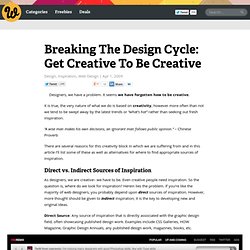

Escuelas creativas. #SP4Ed. Eskola 2.0. Skills. Eleanitz. Www.tpck.org. Eight Tools for effective explanation. Explainers often have lofty goals in their subject matter, but we know that different people have different styles of learning. Explainers utilize many tools to break down complicated subjects beyond just a block of text, and we’ve collected eight of the best. Some of them are visual, interactive, or entertaining, but all of them help users easily digest intricate topics. Infographics Infographics are visual representations of data. They can be as simple as a bar graph, or may contain complex interactive elements. Animation Whether you use After Effects, Flash, or good old paper and pencil, animation can be one of the most successful tools for visual explanation. Mapping As Google Maps and its competitors continue to evolve, and location-specific data becomes more readily available, the applications for mapping are growing.
Timelines Just as mapping allows you to relate data between locations, timelines allow you to plot out distinct moments in time. Music Comics Games/Quizzes Slideshows. Module 3.2 Conducting Classroom Observations. Module 3.2 CONDUCTING CLASSROOM OBSERVATIONS The plan requires that when conducting a classroom observation that a pre-conference and post conference component be included.

Faculty members may provide suggested times and classes for the evaluator to observe. Prior to the pre-conference, faculty members are expected to submit a current course syllabus or outline of the class to be observed. This information will be helpful in understanding the focus of the class, the instructional objectives being delivered and the expected student outcomes. On page 6 (hard copy) and Appendix D of the plan details the responsibilities and guidelines for conducting the classroom observation. The Observation/Refection Cycle below identifies the five components of the classroom observation process. The Pre-Observation Conference should happen in close proximity to the actual observation date. The evaluator is expected to spend at least 50 minutes observing.
The seven secrets behind great teaching - Features - TES Connect. Teaching skills: ways to help improve teacher’s effectiveness Comment:3.5 average rating | Comments (46)Last Updated:7 March, 2014Section:Features What makes the good stand out from the rest?

Stephen Covey’s business self-help book, The Seven Habits of Highly Effective People, has sold more than 15 million copies. The book lists seven principles that, if adopted as habits, can help people become truly effective at what they do. But what makes teachers highly effective? The TES magazine teamed up with business psychologists Crelos to analyse the personalities, motivations and behaviour of 15 award-winning teachers to uncover the seven habits that make them successful in the classroom. How the research worked We chose our research group to represent a cross-section of the teaching population - from teaching assistants, primary and secondary teachers to heads, who were assessed through a series of tests and interviews. 1. 2. Technological Pedagogical Content Knowledge - TPCK.
Breaking The Design Cycle: Get Creative To Be Creative. Designers, we have a problem.

It seems we have forgotten how to be creative. It is true, the very nature of what we do is based on creativity, however more often than not we tend to be swept away by the latest trends or “what’s hot” rather than seeking out fresh inspiration. “A wise man makes his own decisions, an ignorant man follows public opinion.” – Chinese Proverb There are several reasons for this creativity block in which we are suffering from and in this article I’ll list some of these as well as alternatives for where to find appropriate sources of inspiration.
Direct vs. As designers, we are creative– we have to be. Direct Source: Any source of inspiration that is directly associated with the graphic design field, often showcasing published design work. Indirect Source: Any source of inspiration that is not directly related to the graphic design field. Using direct sources of inspiration often leads to duplication. Please read the above statement again. The Nature of Business.
Storytelling. Bloom. Koop. Siemens(2004)-conectivismo. Siglas en inglés).

Para combatir la reducción en la vida media delconocimiento, las organizaciones han sido obligadas a desarrollar nuevosmétodos para llevar a cabo la capacitación.” Algunas tendencias significativas en el aprendizaje: Muchos aprendices se desempeñarán en una variedad de áreas diferentes, yposiblemente sin relación entre sí, a lo largo de su vida. El aprendizaje informal es un aspecto significativo de nuestra experiencia deaprendizaje. La educación formal ya no constituye la mayor parte de nuestroaprendizaje. El aprendizaje es un proceso continuo, que dura toda la vida.
La tecnología está alterando ( recableando ) nuestros cerebros. La organización y el individuo son organismos que aprenden. Muchos de los procesos manejados previamente por las teorías deaprendizaje (en especial los que se refieren al procesamiento cognitivo deinformación) pueden ser ahora realizados, o apoyados, por la tecnología. Saber cómo y saber qué están siendo complementados con saber dónde Antecedentes.
CLIL.